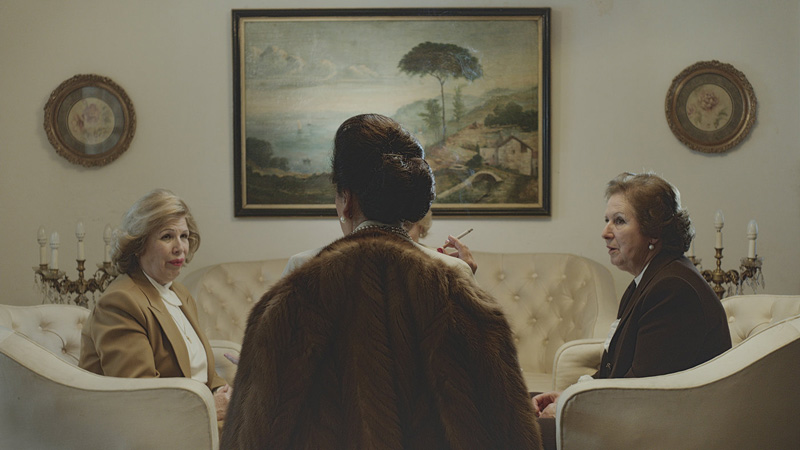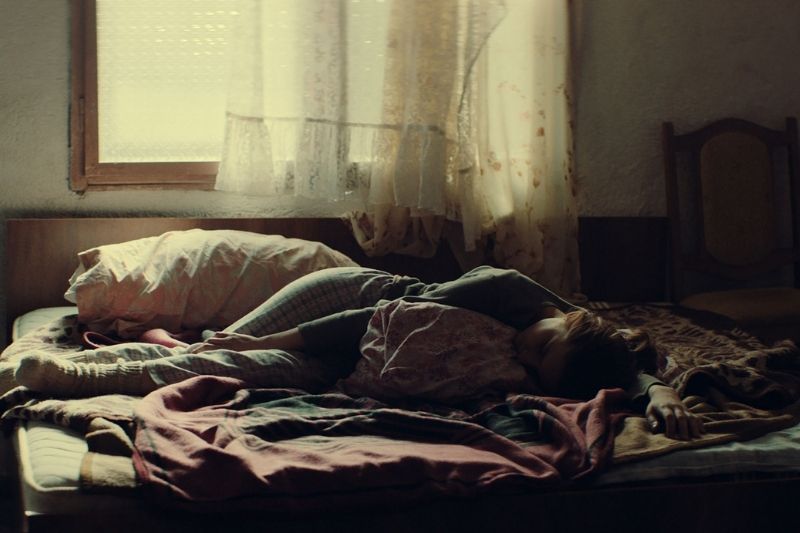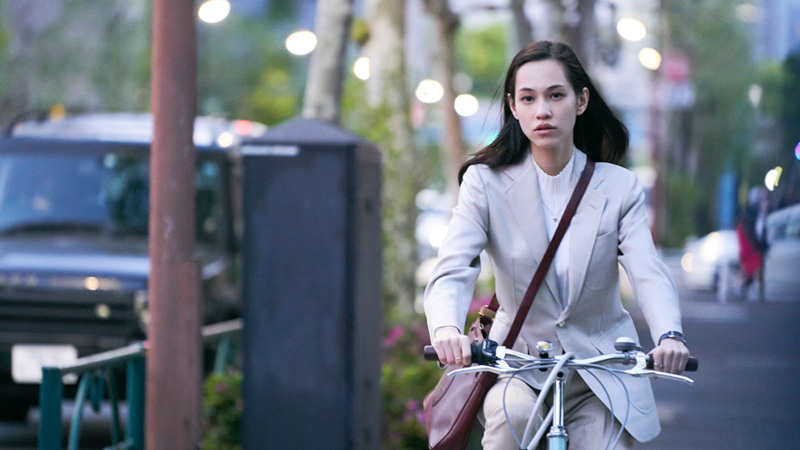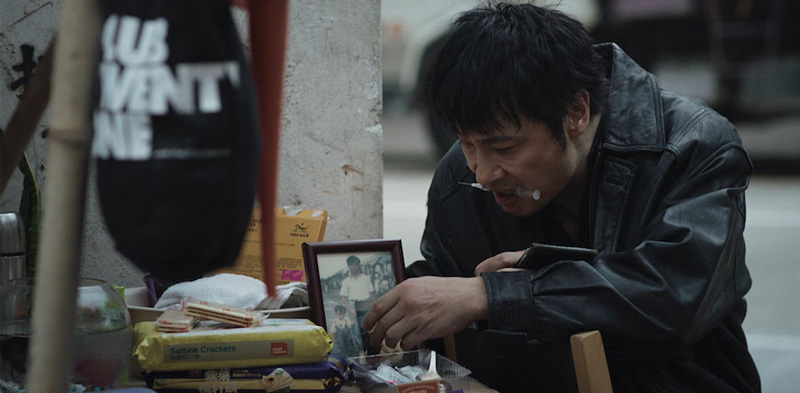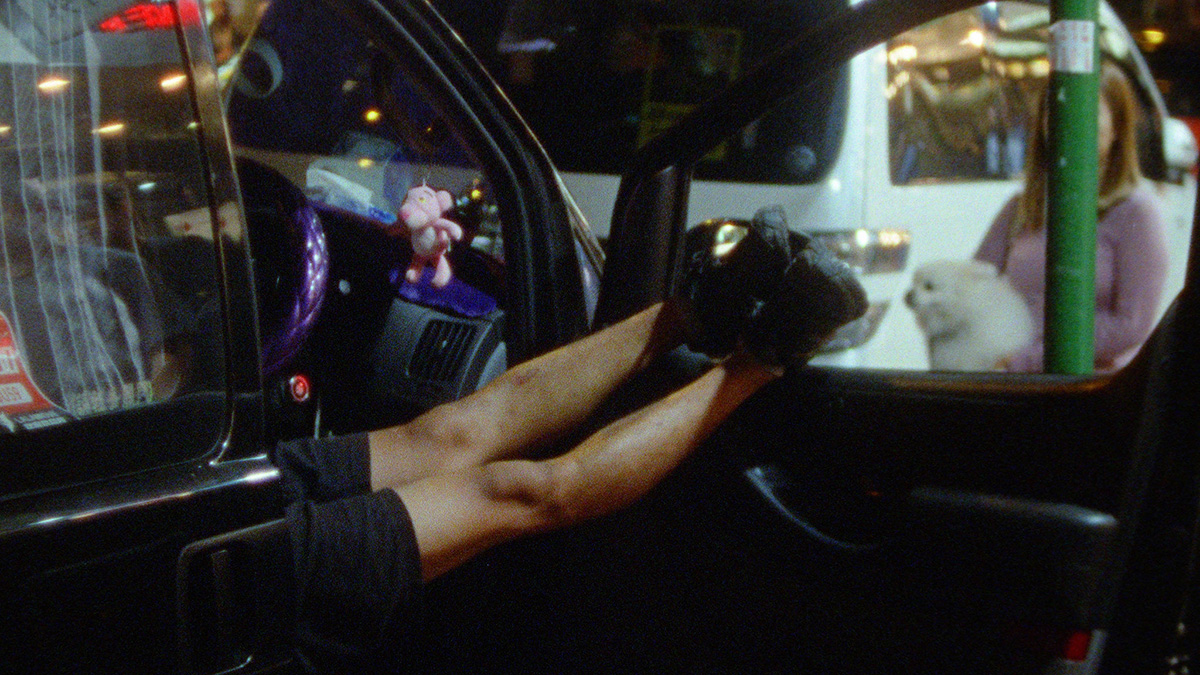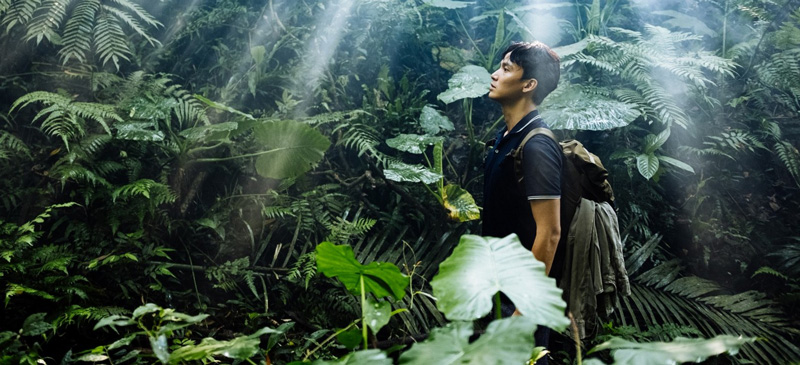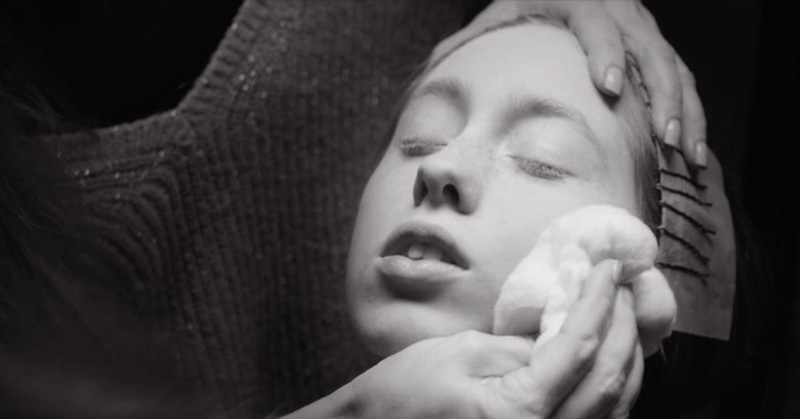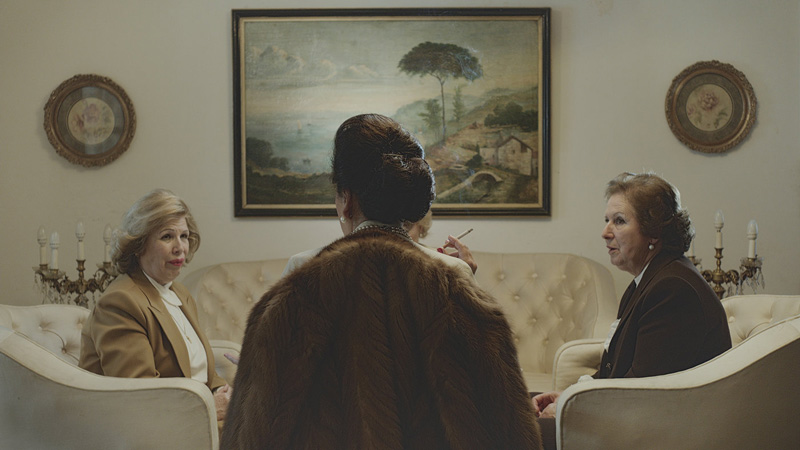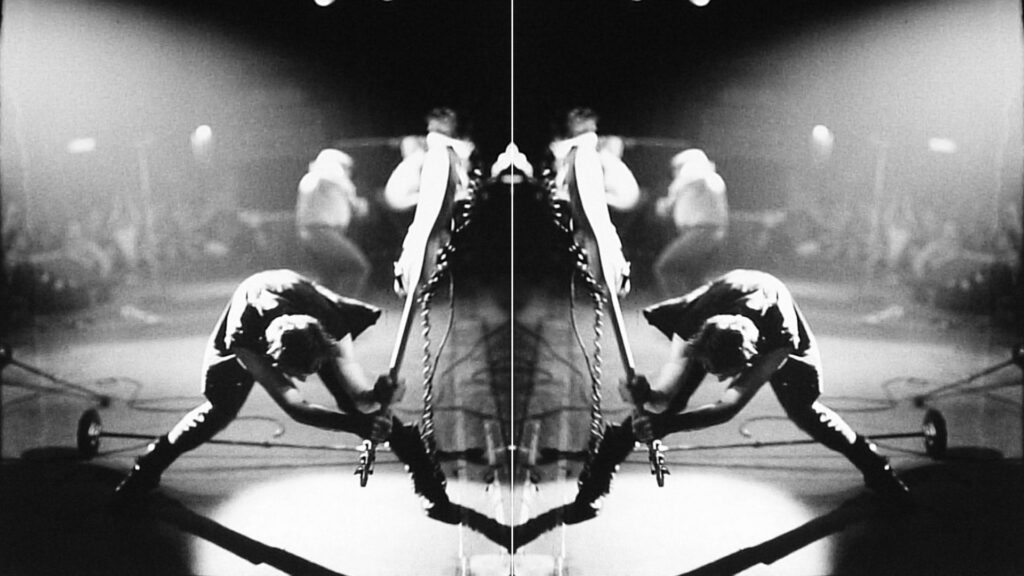«Επέστρεψα» μόλις από μια εβδομάδα γεμάτη International Film Festival Rotterdam. Ευχαριστημένη από την ψηφιακή εμπειρία που, με κάθε ειλικρίνεια, δεν υστερεί καθόλου αυτής του φυσικού χώρου. Ντισκλέιμερ: δε συγκρίνω, ούτε εξισώνω. Η επιβλητικότητα της κινηματογραφικής αίθουσας και η συναθροιστική αύρα του χώρου παραμένουν ανεκτίμητες αρετές ενός φεστιβάλ. Στην παράλληλη όμως πραγματικότητα που ζούμε -την ψηφιοποιημένη- επαινώ την κάθε ποιοτική προσφορά πολιτισμού, που δεν επιχειρεί να αντικαταστήσει αλλά να ενισχύσει.
Προχωράω όμως, γιατί έχω να πω πολλά. Το πρόγραμμα της 50ης διοργάνωσης, πολυφωνικό, πολυπολιτισμικό, πολύπλευρο, αποτελεί μια εξαιρετική επιλογή νέων κινηματογραφικών δημιουργών. Βέβαια, η δημιουργία εδώ δεν αναφέρεται μόνο ως καλλιτεχνική, αλλά κυρίως ως κριτική. Μπορεί να είναι η ματιά που ωριμάζει όσο παραπάνω βλέπει. Μπορεί να είναι το σύγχρονο σινεμά που εισχωρεί όλο και πιο δυναμικά στην πραγματικότητα όπως τη βιώνουμε. Μπορεί να είναι η ευτυχής συγκυρία μιας σχεδόν τυχαίας επιλογής των ταινιών που επέλεξα να δω. Ό,τι και να είναι, οι ταινίες που με συντρόφεψαν στην πρώτη εβδομάδα ενός ακόμα πιο απομονωτικού μήνα, αν και ελάχιστες από αυτές τιμήθηκαν με βραβεία από τη διοργάνωση, ήταν μια γερή δόση χορταστικής ενδοσκόπησης.
Μικρή σημείωση, πριν την σύντομη ανασκόπηση που ακολουθεί, το φετινό πρόγραμμα είχε (εκ προμελέτης ή εξ αμελείας) αρκετό χώρο για τη γυναικεία φωνή. Δε θα σου δώσω στατιστικά, δεν είναι διαγωνισμός φύλων, αλλά ισότητα στις δυνατότητες. Κάτι μου λέει, πως η ισότητα των φύλων δεν είναι υπερρεαλιστικό ιδανικό, αλλά πλέον ένας εφικτός στόχος.
Παρακάτω, εννιά από τις ταινίες όπως τις κράτησα, με τη γεωγραφική τους σημασία στο επίκεντρο – ελπίζοντας να καταλάβεις στην πορεία το λόγο.
Destello Bravío (Mighty Flash)
της Ainhoa Rodríguez
Ισπανία
Βρισκόμαστε σε ένα απομονωμένο χωριό της Ισπανίας. Φαινομενικά, η ταινία ανήκει στο νεορεαλισμό. Η ιστορία είναι κράματα μικροϊστοριών καθημερινών ανθρώπων (που υποδύονται ερασιτέχνες ηθοποιοί). Υπέροχα πλάνα του επαρχιακού τοπίου, με τον ορίζοντα να παραμένει χαμηλά και να δίνει χώρο στον ουρανό. Εξάλλου, εκεί κοιτάζουν και οι χαρακτήρες, ψάχνοντας στην χριστιανική τους πίστη για να εξηγήσουν το παράλογο των επιθυμιών τους. Η ταινία δεν αργεί να φτάσει στο δια ταύτα: Τη σεξουαλικότητα του γυναικείου σώματος, που, ανεξαρτήτως ηλικίας, έρχεται και ξεδιψάει την ξηρότητα μιας φαλλοκρατικής καθημερινότητας. Για να είμαι πιο ακριβής, η γυναικεία επιθυμία αποτυπώνεται σαν μια παρατεταμένη έκρηξη ενός ηφαιστείου σε αιώνιο λήθαργο.
Αν το Destello Bravío είχε γεύση θα ήταν αχνιστό churro κι αν ήταν μουσική, θα ήταν βαλς για έναν. Σωστά υποψιάζεσαι, η ταινία αυτή, εκτός από εξαιρετική φωτογραφία και αποτελεσματικό sound design, έχει χιούμορ και είναι μαύρο.
Looking for Venera
της Norika Sefa (Special Jury Award)
Κόσοβο
Μεταφερόμαστε σε μια επαρχιακή περιοχή στο Κόσοβο. Μια χώρα για την οποία έχουμε μικρή ιδέα. Ακολουθούμε δύο έφηβα κορίτσια και την πορεία εξερεύνησης της θηλυκότητας και της σεξουαλικότητάς τους, πάντα υπό το ανδρικό βλέμμα. Παρότι η ιστορία κλιμακώνεται, έστω σε αργούς ρυθμούς, δεν υπάρχει καθαρή γραμμή αφήγησης. Η ταινία δικαίως έχει στοιχεία ντοκιμαντέρ, καθώς σκιαγραφεί εθνικο-κοινωνικά χαρακτηριστικά με ιδιαίτερη καλαισθησία, συνέπεια στα χρώματα και έμφαση στις αντανακλάσεις. Χωρίς ιδιαίτερη κριτική τοποθέτηση, η ταινία καταφέρνει να περιγράψει αρκετά ρεαλιστικά την περιέργεια της νιότης και τις μορφές αντίστασης στην πατριαρχική κοινωνία. Γι’ αυτό και πρόκειται για μια σημαντική προσθήκη στην σύγχρονη ιστορία του κινηματογράφου.
Gritt
της Itonje Søimer Guttormsen
Νορβηγία
Ανεβαίνουμε Βόρεια, στην πρωτεύουσα της Σκανδιναβίας, και γνωρίζουμε την εξαιρετικά μπερδεμένη και ανήσυχη Gritt (την οποία υποδύεται η Birgitte Larsen, σε ένα ρόλερ κόστερ περφόρμανς). Είναι μονή, ανισόρροπη και ακραία. Όσο προσπαθεί να εισχωρήσει στον καλλιτεχνικό χώρο, με ένα όραμα συγκεκριμένο και συγκεχυμένο, τόσο αυτός την απωθεί μέχρι όλα να εξισορροπηθούν. Δηλαδή, μέχρι η Gritt να συναντήσει τον εαυτό της. Και να αναγνωρίσει ότι η αναταραχή της είναι στην πραγματικότητα θυμός προς τον καπιταλισμό και την εξουσία, που όλο σφίγγουν και στενεύουν τα όρια της κοινωνικής της ύπαρξης. Είναι να απορεί κανείς, πως ένα τόσο δυναμικό όσο κι ευαίσθητο θέμα δεν βρίσκει εύκολα καταφύγιο στην καλλιτεχνική παραγωγή της ασφυκτικά σχεδιασμένης κοινωνίας της Βόρειας Ευρώπης.
Το Gritt, όπως και η ηρωίδα του, είναι ένα ελεύθερο πνεύμα που θέλει απλώς να απλωθεί και να μπλεχτεί, χορεύοντας σε ένα συλλογικό ρυθμό. Κάπου σε όλα αυτά, η ιστορία συχνά επιστρέφει στην τελετουργία ως ανάκτηση της ηρεμίας. Κάτι που, αν δεν κάνω λάθος, είναι κομμάτι της νορβηγικής κουλτούρας (ενδεχομένως πεπερασμένο). Η κάμερα ακολουθεί υπάκουα όλες τις συναισθηματικές μεταπτώσεις της πρωταγωνίστριας. Βασικά, κανένα μέρος της παραγωγής δεν υπερσκιάζει ή υπονομεύει την ιστορία. Όλα έχουν ενορχηστρωθεί με σεμνότητα, απλώς για να σε παρασύρουν στο ταξίδι της Gritt. Σπάνιο δείγμα μη επιδεικτικού επαγγελματισμού στον κινηματογράφο.
Aristocrats (She Is Noble)
της Yukiko Sode
Ιαπωνία
Δώσε προσοχή. Από εδώ και πέρα, ταξιδεύουμε στην μακρινή, πολιτισμικά και χωρικά, Ασία. Συγκεκριμένα στο Τόκυο. Για οποίο (θεωρητικά) ξέρουμε ότι είναι μια κοινωνικά διχασμένη πόλη. Αυτή η ταινία μας συστήνει στις ακρότητες της υψηλής κοινωνίας, όπως τη βιώνουν δύο γυναίκες από διαφορετική θέση, και υπονομεύει μέχρι εκμηδενισμού την αξία της ιεραρχίας. Ναι, πράγματι, το Aristocrats (εναλλακτικός τίτλος, She Is Noble) είναι τόσο καθαρό. Αξίζει βέβαια να σημειωθεί ότι η ταινία προσφέρει μοναδική θέα του ορίζοντα της πόλης. Το Τόκιο, μέσα από το φακό του Aristocrats, είναι αγνώριστο και γοητευτικό, τουλάχιστον στα δικά μου μάτια.
Drifting
του Jun LI
Χονγκ Κονγκ
Μεταφερόμαστε λίγο πιο δυτικά, και στην άλλη μεριά της κοινωνικής κλίμακας. Το Drifting μας πιάνει κατευθείαν από τα μούτρα και καρφώνει το βλέμμα μας στην καρδιά του βασικού πολεοδομικού και κοινωνικού προβλήματος του Χονγκ Κονγκ. Σε μια από τις φτωχογειτονιές της πόλης, που βρίσκεται -παραδόξως- ανάμεσα στις δύο πιο αναβαθμισμένες περιοχές. Εκεί, συναντάμε τους χαρακτήρες της ταινίας, που είναι φορείς του δεύτερου βασικού θέματος της πόλης – την «εκκαθάριση» των δρόμων. Ο κεντρικός, τραγικός ήρωας Fai, άστεγος και χρόνιος ναρκομανής, προσπαθεί να βρει δικαιοσύνη ενάντια στην αστυνομική βία και να αποκαταστήσει την αξιοπρέπειά του. Κάτι που ίσως εν τέλει να κατορθώνει, μέσα από την αλληλεγγύη και αδελφοσύνη της δικής του κοινωνίας. Στην πραγματικότητα, όμως, μια χρηματική αποζημίωση και μια δημόσια απολογία από το κράτος απέχει κατά πολύ από την ουσιαστική κατανόηση και μεταμέλεια, και, φυσικά, δεν υπόσχεται γόνιμο,νομικό μετασχηματισμό. Η ταινία, εκτός του ότι βασίστηκε σε αληθινά γεγονότα, γυρίστηκε εν μέσω του κινήματος διαμαρτυριών στο Χονγκ Κονγκ, μια σειρά από βίαιες διαδηλώσεις κατά του νόμου αφαίρεσης του τείχους προστασίας των νομικών συστημάτων του και της Ηπειρωτικής Κίνας. Γεγονός που δίνει ακόμα μεγαλύτερη ένταση και ευαισθησία στην ταινία, όχι λόγω δραματοποίησης, αλλά πραγματικής ανάγκης για προσοχή σε μια πόλη που «σείεται».
Happy Valley
του Simon Liu
Χονγκ Κονγκ
Το θέμα της πόλης που «σείεται» είναι αυτό που απασχόλησε τον Simon Liu, το σκηνοθέτη αυτής της μικρού μήκους ταινίας, που έδωσε μια συναισθηματική διάσταση στις πρόσφατες διαδηλώσεις του Χονγκ Κονγκ. Πρόκειται για ένα αυθεντικό δείγμα σύγχρονης κινηματογραφικής δημιουργίας, όπου αποδεικνύεται παραδειγματικά η δύναμη της κινούμενης εικόνας. Η πρόθεση του σκηνοθέτη ήταν να αποτυπώσει τις αλληλοεπικαλυπτόμενες συνθήκες που διαμορφώνουν τις αλλαγές γύρω μας. Το μήνυμα, παρότι χρήζει αποκωδικοποίησης, είναι αισθητό. Η συναισθηματική κατάσταση του ατόμου είναι ανάλογη των αλλαγών που σηματοδοτούν την κατάσταση του σημερινού κόσμου. Και καθόλου ασήμαντη, ως προς τη βαθύτερη κατανόηση των επιπτώσεων ενός κόσμου που γίνεται ολοένα και πιο χαοτικός.
Dead & Beautiful
του David Verbeek
Ολλανδία, Ταϊβάν
Πέντε νέοι, κληρονόμοι μυθικών περιουσιών, συναντιούνται στο Ταϊπέι για να σπάσουν την ανία, από τη καθημερινότητα που τους προσφέρει όλα όσα θέλουν. Η ιστορία, παρότι συγκεκριμένη, δεν είναι καθόλου μονόχρωμη. Τα αλαζονικά πειράματα-παιχνίδια των πλουσίων, καθώς και οι αλλεπάλληλες ανατροπές, παραπέμπουν αρκετά στο The Game του David Fincher. Το Dead & Beautiful, όμως, φιλοδοξεί να σχολιάσει τη φιλοσοφία του πλούτου στη βάση του, και το τίμημα της συνειδητοποίησής του, χρησιμοποιώντας βασικά σύμβολα μυθοπλασίας. Το αποτέλεσμα είναι αρκετά διασκεδαστικό -εκτός από τις ανατροπές, οι εικόνες είναι εκθαμβωτικές. Το μήνυμα της ταινίας γίνεται σταδιακά ευθύ και γραμμικό: Ο υλικός πλούτος είναι τέρας, στη συγκεκριμένη περίπτωση βαμπίρ, που τρώει και τρώγεται.
Bipolar
της Queena Li
Κίνα
Μια απόλυτα εμβυθιστική ταινία, που δεν καταλαβαίνεις τίποτα. Λογικό, εφόσον διαδραματίζεται στις ονειρικές σκέψεις της πρωταγωνίστριας που προσπαθεί να βρει το νόημα της ευτυχίας, μέσα από το δρόμο της τρέλας. Παράλογο θα πεις, καθόλου θα σου πω. Γιατί κανείς δε ζει για να είναι απλώς ευτυχισμένος , κι αν ζει γι’ αυτό, είναι χαμένος.
Η ταινία, παρότι ξεκινάει ως ένα θρησκευτικό ταξίδι στο Θιβέτ, ξεδιπλώνεται σαν την ιστορία της Αλίκης στη Χώρα των Θαυμάτων. Τα όρια της πραγματικότητας θολώνουν από τη δύναμη της πίστης, όσο η πρωταγωνίστρια παρασύρεται σε ένα οδοιπορικό, ενδεχομένως, ή μακροβούτι, πιο πιθανό, όσο η ίδια ανακαλύπτει τη συνισταμένη της – τον εαυτό της. Η έλλειψη βάθους από τις πανέμορφες γκριζαριμένες εικόνες που προσφέρονται σε αφθονία είναι απόλυτα δικαιολογημένη και μετατρέπει την εμπειρία της ταινίας σε επίπονη και απολαυστική διαδικασία.
Bebia, à mon seul désir
της Juja Dobrachkous
Γεωργία
Παραδόξως, η αγάπη μπορεί να εκδηλωθεί ως απόρριψη, αυτό όμως δε σημαίνει ότι δεν πληγώνει. Το Bebia, à mon seul désir μας εισάγει κατευθείαν στα βάθη των οικογενειακών δυναμικών. Παρακολουθούμε την ιστορία από τη μεριά της Ariadna, της νεότερης της οικογένειας, η οποία καλείται να εκτελέσει ένα παλιό έθιμο, που, ειρήσθω εν παρόδω, διατηρείται ακόμα, κυρίως στη Mingrelia της Γεωργίας. Σύμφωνα, λοιπόν, με το έθιμο αυτό, η Ariadna οφείλει να βοηθήσει τη ψυχή της γιαγιάς της να συνδεθεί με το νεκρό της σώμα. Πρακτικά αυτό σημαίνει ότι πρέπει να καλύψει 25χιλ με ένα νήμα. Η ιδέα σαφώς παραπέμπει στο μύθο της Αριάδνης, και η ιστορία έτσι γεμίζει με μεταφορές για το λαβύρινθο της ζωής, που είναι μονόδρομος, αλλά βυθισμένος στο σκοτάδι. Δε ξέρεις τι βρίσκεται μπροστά σου. Από τη φιλοσοφική άποψη, αυτή η ιδέα ισχυροποιήθηκε κατά τον Χάιντεγκερ, σύμφωνα με τον οποίο «είμαστε ερριμένοι στον κόσμο». Ξέρεις μόνο που από ξεκίνησες και που πρέπει να φτάσεις. Στην άλλη άκρη του νήματος.
Η ταινία αυτή δε θα μπορούσε παρά να είναι ασπρόμαυρη. Μια επιλογή, όχι αισθητική, αλλά αναφορική στην κινηματογραφική σημειολογία του παρελθόντος. Φυσικά, στη συγκεκριμένη περίπτωση, το ασπρόμαυρο απελευθέρωσε την ιστορία από τον πλουραλισμό των χρωμάτων και των υφών και της έδωσε χώρο να απλοποιήσει τον πλούτο της παιδικής ηλικίας με σκιές και φως.
IFFR | Βραβεία 2021
Tiger Competition award
Pebbles
Σκην: Vinothraj P.S.
Tiger Competition special jury award
I Comete – A Corsican Summer
Σκην: Pascal Tagnati
Tiger Competition special jury award
Looking For Venera
Σκην: Norika Sefa
VPRO Big Screen award
The Dog Who Wouldn’t Be Quiet
Σκην: Ana Katz
BankGiro Loterij audience award
Quo Vadis, Aida?
Σκην: Jasmila Žbanić
Fipresci award
The Edge Of Daybreak
Σκην: Taiki Sakpisit
Youth Jury award
Night Of The Kings
Σκην: Philippe Lacôte
Robby Muller award
Σκην: Kelly Reichardt
Ammodo Tiger short swards
Sunsets, Everyday
Σκην: Basir Mahmood
Terranova
Σκην: Alejandro Pérez Serrano, Alejandro Alonso Estrella
Maat Means Land
Σκην: Fox Maxy
KNF award
Manifesto
Σκην: Ane Hjort Guttu
A review of Rotterdam’s International Film Festival 2021.
I just “came back” from a week full of the International Film Festival Rotterdam. Fascinated by the digital experience, which, in all honesty, does not at all fall short of physical space. Disclaimer: This is neither a comparison nor an equation. The majesty of the cinema theater and the gathering vibes of the space remain invaluable virtues of a festival. However, in the parallel reality we live in, the digitized one, I revere every thoughtful cultural gesture, which does not try to replace, but to empower.
But let me skip forward – I have many things to share with you. The program of the 50th IFFR, polyphonic, multicultural, multifaceted, is an excellent achievement of the portrayal of the young film creators. Of course, creation here is not only referred to as an artistic practice, but mainly as a critical one. Perhaps, it is the eye, that the more it looks the more it is formed. Perhaps, it is the contemporary cinema that penetrates more and more dynamically into the reality as we experience it. Perhaps, it is the happy coincidence of an almost random selection of the films I watched. Whatever it is, the dozens of films that accompanied me in the first week of an even more secluded month, although few of them were honored with awards from the festival, were a solid dose of satisfying introspection.
A little note, before the brief review that follows, this year’s program had (by design or negligence) enough space for the female voice. I will not give you statistics, it is not a gender contest, but equality in opportunities. My gut tells me that gender equality is not anymore a surreal ideal, but, by now, an achievable goal.
Below, nine of the films as I kept them in my memory, with their geographical focus in the spotlight – with the hope that you’ll understand why by the end.
Destello Bravío (Mighty Flash)
by Ainhoa Rodríguez
Spain
We are in an isolated village in Spain. Apparently, the film belongs to neorealism. The story is an alloy of short stories of everyday people (played by amateur actors). Wonderful shots of the provincial landscape, with the horizon remaining low and giving space to the sky. After all, that is where the characters look, searching in their Christian faith to explain the absurdity of their desires. The film does not take long to get to them: the sexuality of the female body, which, regardless of age, comes and thirsts for the dryness of a phallic daily life. To be more precise, female desire is depicted as a prolonged eruption of a volcano in eternal lethargy. If Destello Bravío had a taste, it would be a steaming churro, and if it was music, it would be a waltz for one. You are right, this film, apart from excellent photography and effective sound design, has humor and is black.
Looking for Verena
by Norika Sefa (Special Jury Award)
Kosovo
We move on, to enter the world of a provincial area in Kosovo. It is true, little do we know about this country. We follow two teenage girls and the process of exploring their femininity and sexuality, always under the male gaze. Although the story escalates, albeit, at a slow pace, there is no clear narrative line. The film rightly has documentary elements, as it is rather ethno observational, with particular elegance, consistency in smooth colors and emphasis on reflections. Without a particularly critical attitude, the film manages to describe quite realistically the curiosity of youth and the forms of resistance in a patriarchal society. And this is why it is an important addition to the modern history of cinema.
Gritt
by Itonje Søimer Guttormsen
Norway
We go up North, in the capital of Scandinavia, and meet the extremely confused and neurotic Gritt (played by Birgitte Larsen, in a performance roller coaster). She is lonely, unbalanced, and extreme. The more she tries to get into the world of art, with a specific but confused vision, the more this world pushes her away, until everything is balanced. That is, until Gritt meets herself. And until she recognizes that her turmoil agitation is, in fact, pure anger against capitalism and power, which are increasingly tightening and narrowing the boundaries of her social existence. It is to wonder, how such a dynamic and sensitive subject does not find more often refuge in the artistic production of the suffocatingly designed society of Northern Europe.
Gritt is a free spirit who just wants to spread out and get involved, to dance to a collective rhythm. In between, the story keeps returning frequently to rituals, as a restoration of serenity. Which, if I’m not mistaken, is part of Norwegian culture (possibly an obsolete one). The camera obediently follows all the emotional transitions of Gritt. Anyway, production, as a whole and its parts, does not overshadow or undermine the story. Everything has been modestly orchestrated to take you on Gritt’s journey. It is indeed a rare example of non-ostentatious professionalism in cinema making.
Bebia, à mon seul désir
by Juja Dobrachkous
Georgia
Ironically enough, love can manifest as rejection, but that does not mean it does not hurt. Bebia à mon seul désir introduces us directly to the depths of family dynamics. We are watching the story from the side of Ariadna, the youngest of the family, who is called to perform an old custom, which is still preserved, mainly in Mingrelia, Georgia. According to this custom, Ariadna must help her grandmother’s soul to connect with her dead body. Practically this means that she must cover 25km with one thread. The idea clearly refers to the myth of Ariadne, and the story is thus filled with metaphors for the labyrinth of life, which is one-way, but immersed in darkness. You do not know what is in front of you, you are struggling in the dark. From a philosophical point of view, this idea was reinforced by Heidegger, according to whom, “we’re thrown into the world” (Thrownness). You can only know where you started and where you need to go. At the other end of the thread.
This movie could not but be black and white. A choice that is not aesthetic, but referring to the cinematic semiology of the past. Of course, in this case, black and white freed the story from the pluralism of colors and textures, and gave space to simplify the richness of childhood with shadows and light.
Aristocrats
by Yukiko Sode
Tokyo
Bear with me. From now on, we travel to the distant, culturally and spatially, Asia. We already know (theoretically) that Tokyo is a socially divided city. This film introduces us to the extremes of high society, as experienced by two women from different positions, and undermines to zero the value of hierarchy. Yes, indeed, Aristocrats (alternative title, She Is Noble) is so pure and clear. Of course, it is worth noting that the film offers a unique view of the city skyline. Tokyo, through the lens of this film, is unrecognizable and charming, at least for me
Drifting
by Jun LI
Hong Kong
We move on a little further to the West, and to the other side of the social scale. Drifting takes us by the hand and sets our gaze on the heart of Hong Kong’s basic urban and social problem. In one of the slums of the city, located -surprisingly- between the two most gentrified neighborhoods. There, we meet with the characters of the film, who are the bearers of the second main issue of the city – the “clearance” of the streets. The protagonist, the tragic hero Fai, a homeless and chronic drug addict, tries to find justice against police violence and to restore his dignity. He eventually achieved it (probably), through the solidarity and brotherhood of his own society. However, compensation and a public apology from the government does not come with a meaningful understanding and repentance, and, of course, does not promise a productive and fair transfiguration to the system. The film, except that it was based on true events, was shot in the midst of violent demonstrations, part of the protest movement in Hong Kong that happened in 2019-2020, also known as the Anti-Extradition Law Amendment Bill Movement. A fact that intensifies the sensitivity of the film, not because of dramatization, but because of a real need for attention to a city that is “shaken”.
Happy Valley
by Simon Liu
Hong Kong
The theme of the city that is “shaken” is what preoccupied Simon Liu, the director of this short film, which gave an emotional dimension to the recent demonstrations in Hong Kong. Happy Valley is an authentic example of modern cinematic creation, where the power of the moving image is exemplified gloriously. The director’s intention was to capture the overlapping conditions that shape the reconfigurations around us. The message, although it needs to be decoded in its details, can be sensed. The emotional state of the individual is proportional to the changes that signal the state of today’s world. And by no means insignificant, in terms of a deeper understanding of the effects of a world that is becoming increasingly chaotic.
Dead & Beautiful
by David Verbeek
The Netherlands, Taiwan
Five young people, heirs of mythical fortunes, meet in Taipei to break the boredom from the daily life that offers them everything. The story, although solid, is by no means monochromatic. The arrogant experiments-games of the rich, as well as the successive twists, are quite reminiscent of David Fincher’s The Game. However, Dead & Beautiful aspires to comment on the philosophy of wealth at its core, and the price of its realization, using basic symbols of fiction and mythology. The result is quite amusing – apart from the twists, the images are dazzling. The message of the film gradually becomes straightforward and linear: Material wealth is a monster, in this case, a vampire, that eats and is eaten.
Bipolar
by Queena Li
China
An entirely immersive film, from which you do not get a thing. Which makes sense, since it takes place in the dreamy thoughts of the protagonist, who is trying to find the meaning of happiness, through the path of madness. If you think that this is absurd, I can assure you that is not at all. Because no one lives to just be happy; and if someone does live for it, he is lost.
Although it begins as a religious journey to Tibet, Bipolar unfolds like the story of Alice in Wonderland. The boundaries of reality are blurred by the power of faith, as the protagonist is drawn into a journey, possibly, while she discovers her very component – herself. The lack of depth from the beautiful grayscale images, that are offered in abundance, is perfectly justified and turns the experience into a painful and enjoyable viewing.
IFFR winners 2021
Tiger Competition award
Pebbles
Dir: Vinothraj P.S.
Tiger Competition special jury award
I Comete – A Corsican Summer
Dir: Pascal Tagnati
Tiger Competition special jury award
Looking For Venera
Dir: Norika Sefa
VPRO Big Screen award
The Dog Who Wouldn’t Be Quiet
Dir: Ana Katz
BankGiro Loterij audience award
Quo Vadis, Aida?
Dir: Jasmila Žbanić
Fipresci award
The Edge Of Daybreak
Dir: Taiki Sakpisit
Youth Jury award
Night Of The Kings
Dir: Philippe Lacôte
Robby Muller award
Dir: Kelly Reichardt
Ammodo Tiger short swards
Sunsets, Everyday
Dir: Basir Mahmood
Terranova
Dir: Alejandro Pérez Serrano, Alejandro Alonso Estrella
Maat Means Land
Dir: Fox Maxy
KNF award
Manifesto
Dir: Dor Ane Hjort Guttu
